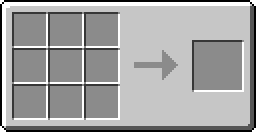Difference between revisions of "Steam Generator"
m (Re-wrote bits) |
m (Oops) |
||
| Line 23: | Line 23: | ||
Any [[:Category:Heat Generator|Heat Generator]] can be used to heat a Steam Generator from any side (unlike most other [[Heat]] Machines that only have 1 input face), but only the [[Liquid Heat Exchanger]] and [[Electric Heat Generator]] provide up to 100 hU, that is more practical then several [[Fluid Heat Generator]]s that would be needed in order to reach 100 <sup>o</sup>. Using an Electric Heat Generator '''will always result in a net loss of energy''', even if all the produced (Superheated) Steam is turned into [[EU]] using the [[Kinetic Steam Generator]] connected to a [[Kinetic Generator]]. | Any [[:Category:Heat Generator|Heat Generator]] can be used to heat a Steam Generator from any side (unlike most other [[Heat]] Machines that only have 1 input face), but only the [[Liquid Heat Exchanger]] and [[Electric Heat Generator]] provide up to 100 hU, that is more practical then several [[Fluid Heat Generator]]s that would be needed in order to reach 100<sup>o</sup>C. Using an Electric Heat Generator '''will always result in a net loss of energy''', even if all the produced (Superheated) Steam is turned into [[EU]] using the [[Kinetic Steam Generator]] connected to a [[Kinetic Generator]]. | ||
<!--Copyright IC2 Wiki ~Chocohead 2015--> | <!--Copyright IC2 Wiki ~Chocohead 2015--> | ||
[[Category:Steam]][[Category:Heat]][[Category:Heat Consumers]] | [[Category:Steam]][[Category:Heat]][[Category:Heat Consumers]] | ||
Revision as of 17:50, 3 April 2015
The Steam Generator requires Heat in order to boil Water into Steam. The most common use for the Steam is to be turned into power via the Kinetic Steam Generator.
Recipe[edit]
Usage[edit]
Boiling normal water causes the Steam Generator to calcify, as impurities build up inside. This can be fixed simply by breaking and replacing the Steam Generator. Calcification is measured by %, as has no effect until it is at 100%, at which point the Steam Generator will stop working.
Using Distilled Water however, there are no impurities in the water, so it doesn't increase the Steam Generator's calcification, no matter how long it is used. Distilled Water is also produced from condensing Steam in either a Condenser or Kinetic Steam Generator, meaning a closed cycle can be created. Water however would require a constant supply, and the produced Distilled Water to be dealt with separately. Water and Distilled Water cannot be used at the same time, but once a Steam Generator's internal tank is empty, it can accept either, ignoring what it previously had in.
The amount of Steam produced is solely down to what the controls in the GUI are set to. For every 1mb/t of (Distilled) Water that is put in, 100mb/t of Steam will be produced. If normal Steam is being produced, every 100mb/t of Steam also requires 100 hU in order to maintain the heating required. If the pressure is changed however, this value increases. The required heat increases logarithmically per bar of pressure. At 220+ bars, Superheated Steam is produced instead of normal Steam. The most efficient Superheated Steam setting is at 220 bars of pressure, as it takes 200 hU per 100 mb/t of Superheated Steam produced. It should be noted that the Superheated Steam is actually produced at 374oC, and it is merely at 220 bars of pressure that this temperature is reached. There is a danger that above 500oC the Steam Generator will explode, so the pressure should not be set above 250 bars, or Heat added without pumping/releasing (Distilled) Water in.
If the required heat based off the Water input and pressure is either not provided the Steam Generator will fluctuate between producing Steam and just releasing (Distilled) Water. It is strongly recommended to set the pressure to 220 bars if Superheated Steam is desired else just leave it at 0 bars unless a specific amount of heat usage is needed for any reason.
A common mistake with the Steam Generator is to not have a Condenser connected to it in some way. Without one, there will be visual Steam explosions, that don't affect the player or environment, but does indicate a loss of (Distilled) Water. The Condenser doesn't have to have Steam piped to it, if it is touching a Kinetic Steam Generator that is receiving Steam, it will take the condensation and stop Steam explosions from happening. A Condenser can be avoided from being required, by pumping all the produced Steam directly into a tank. This will prevent Steam explosions as long as there is room in the tank for Steam to be dumped into.
The Steam Generator automatically ejects the produced (Superheated) Steam, so to prevent back flow of it into (Distilled) Water input pipes, either a filter should be added, or care taken to ensure the pipes never empty. (Superheated) Steam will never be ejected into pipes that aren't empty.
Any Heat Generator can be used to heat a Steam Generator from any side (unlike most other Heat Machines that only have 1 input face), but only the Liquid Heat Exchanger and Electric Heat Generator provide up to 100 hU, that is more practical then several Fluid Heat Generators that would be needed in order to reach 100oC. Using an Electric Heat Generator will always result in a net loss of energy, even if all the produced (Superheated) Steam is turned into EU using the Kinetic Steam Generator connected to a Kinetic Generator.
